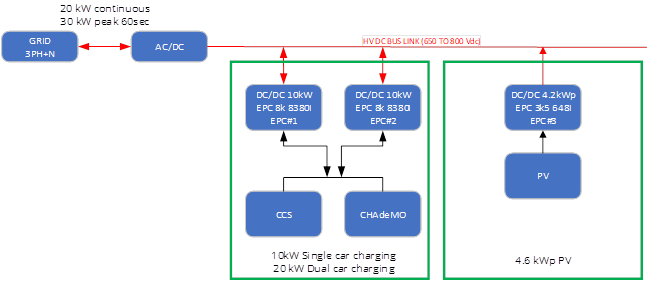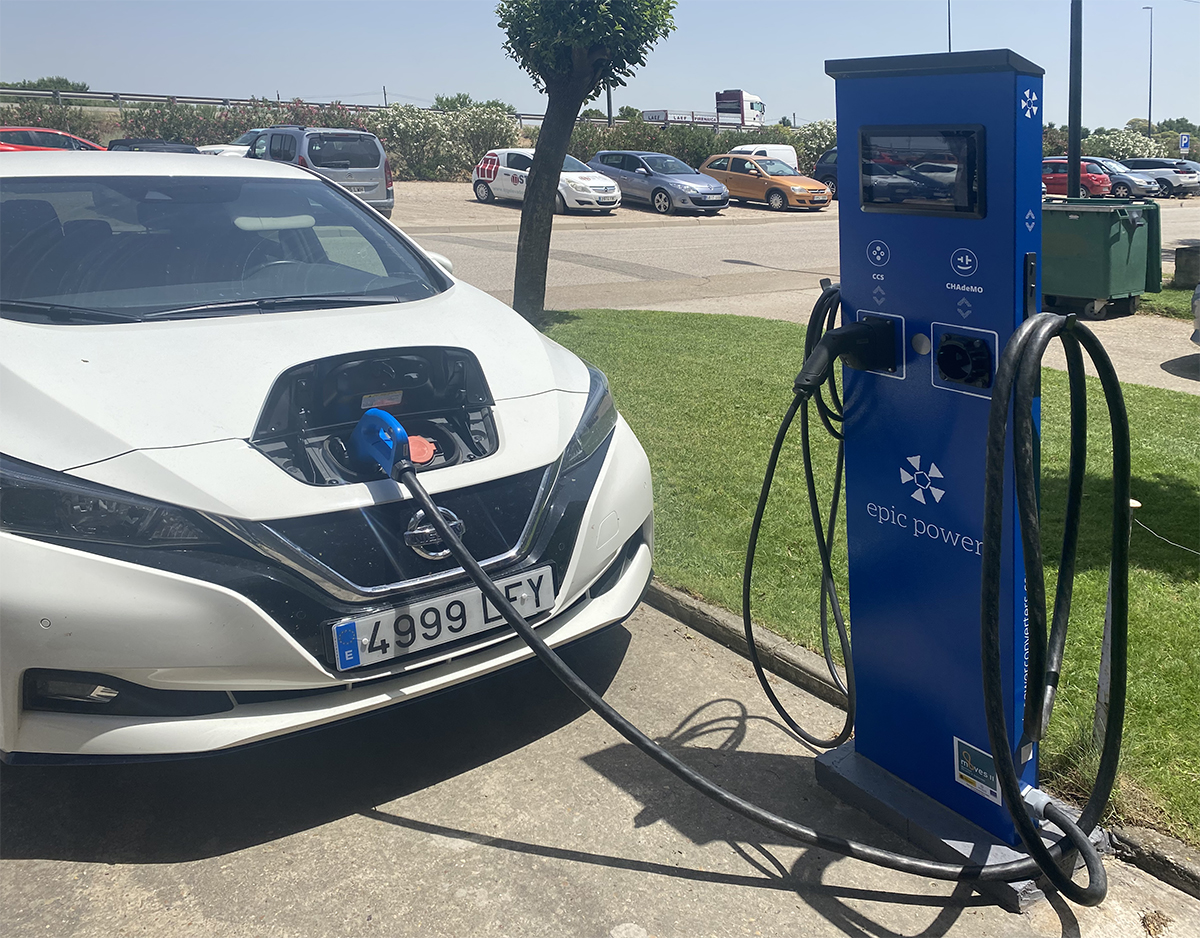The increasing electrification of the automotive industry is leading to an extensive development of power electronics linked to electric vehicles. The similarity of features with a conventional combustion car is essential for end users; therefore, the autonomy and charging time of electric vehicles are a hot topic for stakeholders and many R+D efforts worldwide are undergoing.
Regarding charging station connection technologies, there are currently different types of connectors where CCS and CHAdeMO standards are the most prevalent for high power DC charging.
It is essential for EVSEs (Electric Vehicle Supply Equipment) not only to achieve high power delivering (that will reduce the EV charging time) but also to implement bidirectional capabilities in order to draw energy from the connected EV when the infrastructure needs to mitigate high power peak demands. This is commonly known as V2X (Vehicle-to-X), with particularizations such as V2G (Vehicle-to-Grid) or V2V (Vehicle-to-Vehicle) among others.
EVs are commonly parked outside a factory, company, commercial parking lots, homes, etc. for a relatively long period time (between 2 to 8 hours). Bidirectional EVSEs with a central neural machine-learning algorithm bring the possibility to smooth and undersize the overall demand from the utility power grid and therefore, the required infrastructure, among other benefits.

Epic Power has developed a Pilot Project, with support from the Ministry for the Ecological Transition and the Demographic Challenge under grant number PGE-MOVES-SING-2019-000070. This project demonstrates how to integrate our isolated DC/DC bidirectional converters (EPC) in a 20 kW EVSE that is capable of charging and/or discharging two vehicles at the same time (CCS and CHAdeMO one each). For this purpose, a small DC micro-grid has been created with a PV string supplying up to 4.6 kWp in a sunny day. PV panels are connected to the DC grid by means of another EPC converter with MPPT capability.

In this project, some machine-learning algorithms (in particular LSTM, Long Short-Term Memory Networks) have been implemented and take decisions based on the following predictions:
- Energy demand of the manufacturing facility
- PV solar energy generation
- EV plug-in time and duration
Read the full Application Note: “Application Note: Bidirectional EVSE (Electrical Vehicle Supply Equipment)”.
If you want more information, visit our website, or contact us.

